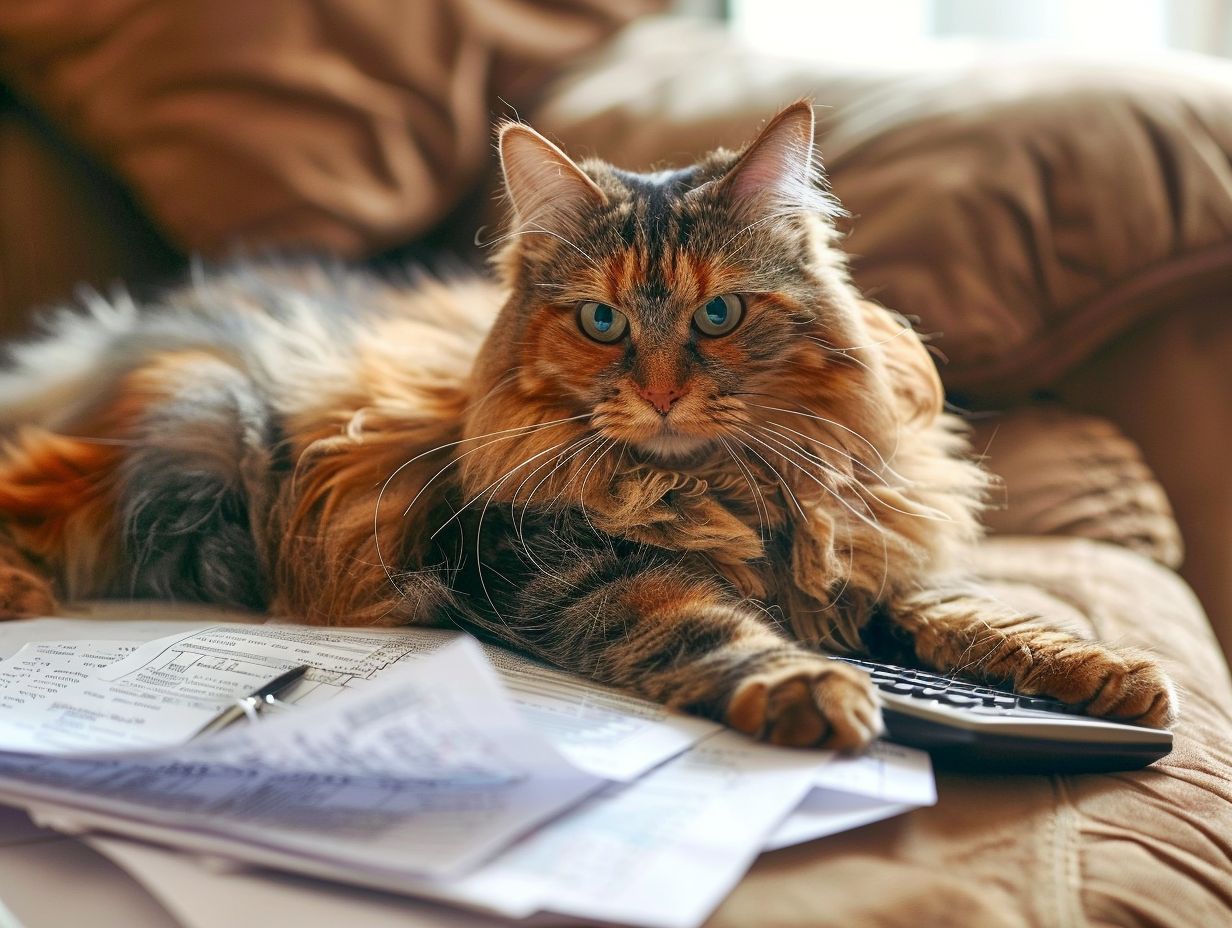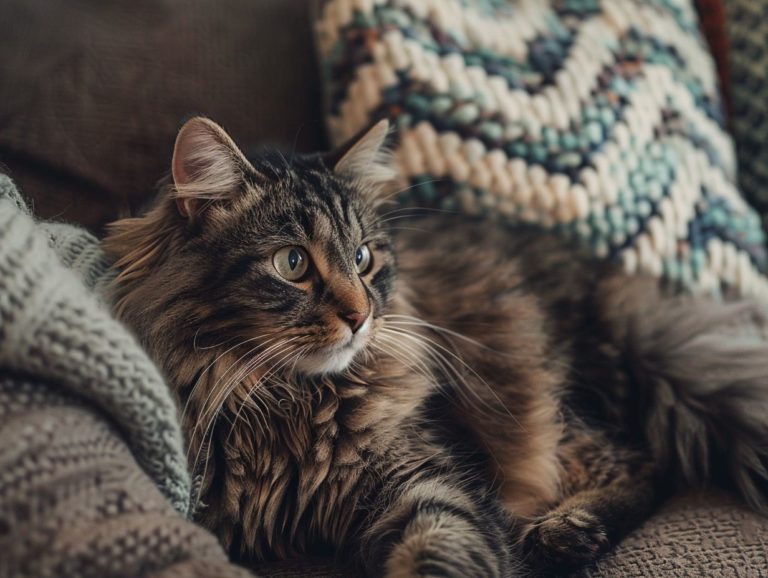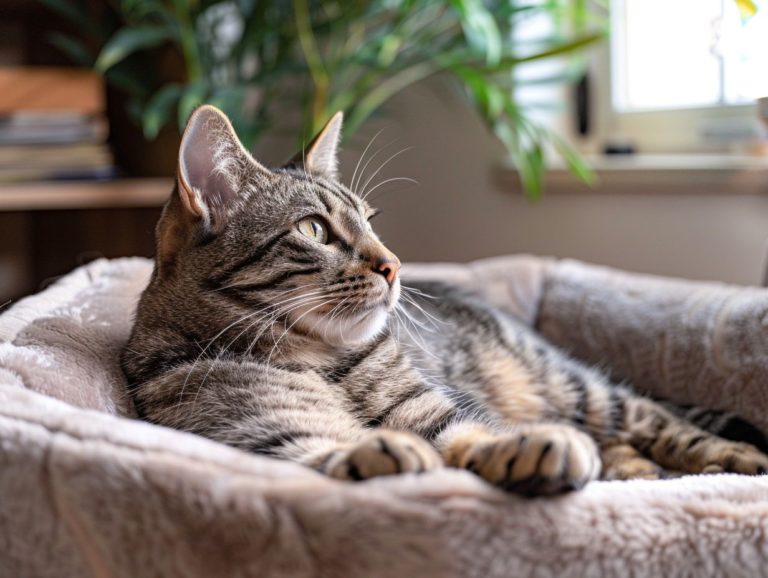The Impact Of Your Cats Health History On Insurance Premiums
Pet insurance offers financial protection to pet owners against unexpected medical expenses. The cost of insurance premiums for cats can be influenced by various factors, with the most crucial being an understanding of how these factors, such as pet age, breed, pre-existing conditions, health history, and more, also impact coverage. These factors can affect a cat’s insurance premiums, and there are strategies available to lower the cost of insurance while ensuring optimal coverage for your pet:
Key Takeaways:

Understanding Pet Insurance
Pet insurance is a financial product designed to help pet owners cover veterinary care costs in the event that their pets become ill or injured. By providing coverage for unexpected medical expenses, pet insurance offers pet owners peace of mind and eliminates financial barriers. Purchasing a pet insurance policy ensures that pets can receive necessary medical care without the worry of high costs.
Apart from aiding in emergencies, pet insurance also promotes regular veterinary check-ups and preventative care, enhancing the overall health and lifespan of pets. Given the high costs associated with veterinary treatments and procedures due to advancements in veterinary medicine, pet insurance is a wise investment for responsible pet owners looking to safeguard their pets’ health.
What is Pet Insurance and How Does it Work?
Pet insurance is a form of financial risk protection where pet owners pay a monthly premium to an insurance provider in exchange for coverage of veterinary expenses. The policy typically includes a deductible, coverage limits, and co-insurance terms, which determine the level of out-of-pocket expenses for the pet owner. These factors are crucial in determining both the cost and extent of coverage provided by the pet insurance policy.
The deductible represents the amount the pet owner must pay before the insurance company begins covering expenses. Lower deductibles usually correspond to higher monthly premiums. Coverage limits define the maximum amount that the insurance will contribute towards a specific claim or within a specific period. Co-insurance requires the policyholder to share a percentage of the costs with the insurer after the deductible has been met.
Factors that Affect Pet Insurance Premiums
Various factors influence pet insurance premiums, including age, breed, location, deductible, coverage limit, and co-insurance. The age of the pet significantly affects insurance costs, with older pets leading to higher premiums due to more health problems. Breeds may have genetic predispositions to specific illnesses, altering risk profiles and pricing. Geographic location plays a role as regional veterinary costs vary. Deductibles impact insurance prices, with lower deductibles resulting in higher monthly premiums. Coverage limits determine the maximum payout and can influence pricing. Co-insurance, the percentage the pet owner must pay after reaching the deductible, also impacts monthly premiums.
Age and Breed of Your Cat
The age and breed of your cat significantly influence the cost of pet insurance. Younger cats and certain breeds typically have lower premiums due to their reduced likelihood of hereditary conditions or other health issues that are more prevalent in older cats or specific breeds.
Factors such as the theory that kittens are healthier and less likely to develop chronic diseases compared to older cats contribute to lower premiums. This is because younger cats generally require less medical intervention and veterinary care.
Some breeds have fewer genetic health predispositions, making them eligible for lower insurance premiums. Insurance companies evaluate these factors to assess the risk of insuring a cat, which impacts the cost and coverage of health services provided by the policy.
Pre-Existing Conditions

Pre-existing conditions in pets significantly impact pet insurance coverage and costs. Pet health conditions diagnosed before obtaining insurance coverage may lead to exclusions or higher insurance premiums. The implications of pre-existing conditions are crucial to consider as they can restrict coverage for treatments related to those conditions or even for unrelated illnesses.
Understanding how pre-existing conditions influence eligibility and costs enables pet owners to make informed decisions about their pet’s healthcare. This involves carefully reviewing policy details and discussing the pet’s health history with insurance providers to ensure transparency and accurate coverage expectations. Proactively managing pre-existing conditions can help secure comprehensive and cost-effective pet insurance policies.
Health History of Your Cat
The health history of your cat, including previous illnesses and medical treatments, can influence pet insurance prices. Insurance companies utilize a comprehensive overview of a cat’s medical history to evaluate risks and determine coverage terms. Chronic illness or frequently recurring health issues in cats may impact insurance prices as they are more likely to necessitate medical treatment in the future.
Information about past treatments is crucial for ascertaining potential insurance coverage, and pre-existing conditions may influence eligibility for specific benefits. Understanding your cat’s health history allows for selecting a pet insurance policy that aligns better with individual medical needs and concerns.
Therefore, a thorough comprehension of your pet’s health background is essential for obtaining adequate coverage at a reasonable price.
How Your Cat’s Health History Can Impact Insurance Premiums
The health history of a cat can impact insurance premiums, with pre-existing conditions or frequent illnesses often resulting in higher pet insurance premiums or limited coverage. This is because such cats are at a higher risk of incurring significant veterinary costs and may require frequent treatments or veterinary care.
Insurance providers assess past health records to evaluate the potential financial risk of insuring a cat. Cats with pre-existing conditions or a history of frequent illnesses typically need more regular veterinary care and costly treatments, increasing the financial risk for the insurance company. Consequently, insurance premiums are elevated for these cats. If your cat has a record of undergoing expensive treatments or surgeries, the insurance provider may impose exclusions on certain conditions or treatments. This could impact the level of care that insurance can offer for your cat and should be considered when selecting a plan for your pet.
Common Health Issues in Cats and Their Impact on Premiums
Identifying common health issues in cats such as dental problems, urinary tract infections, and arthritis is essential for pet insurance purposes. This is because they can impact the cost of premiums based on treatment expenses and frequency of occurrence.
Preventive care plays a crucial role in decreasing the likelihood of these issues and lowering costs, thereby reducing insurance premiums. Regular dental cleanings, a balanced diet to prevent urinary tract issues, and adequate exercise for arthritis are all factors that contribute to a cat’s overall health and help minimize the need for expensive treatments.
As a result, insurers often provide lower rates to responsible pet parents who proactively take preventive measures to mitigate risks and potential costly reimbursements.
The Importance of Accurate Health History for Insurance Coverage
When obtaining cat insurance, having an accurate pet health history is crucial. A comprehensive record that includes past illnesses, treatments, and vaccinations ensures that your pet receives the necessary coverage and enhances the efficiency of insurance claims.
Maintaining an precise pet health history is advantageous for the overall well-being of the animal and plays a key role in maximizing insurance coverage. By monitoring your cat’s medical history, you can proactively address potential health issues through preventive care, thereby reducing the risk of future complications. Visit breed impact on feline health insurance costs for more information.
Pet insurance companies often offer lower premiums and broader coverage options to pet owners who provide detailed health documentation. Detailed records can streamline the claims process, saving time and alleviating the stress of emergencies.
Tips for Lowering Your Cat’s Insurance Premiums

To reduce the cost of cat insurance, the best approaches include controlling your cat’s health costs by maintaining its health, selecting the most suitable insurance policy that meets your cat’s requirements, and exploring optional preventive care benefits.
It is essential to ensure that your cat receives regular veterinary check-ups and vaccinations to promote overall health and potentially lower insurance expenses. This proactive approach aids in early detection of any health issues and helps avoid the need for more expensive treatments at later stages.
Additionally, inquiring with your veterinarian about any discounts or wellness packages offered by the insurance company can help decrease premiums. These wellness packages typically encompass veterinary services at a discounted rate, benefiting both veterinary bills and insurance costs.
Maintaining Good Health for Your Cat
Ensuring the good health of your cat through regular veterinary check-ups, a well-balanced diet, and adequate exercise can help decrease the cost of insurance. Healthy lifestyle practices result in fewer illnesses and fewer potential insurance claims.
Implementing preventative care strategies such as vaccinations, parasite prevention, and dental cleaning assist in maintaining your cat’s health and may reduce insurance costs. Proper nutrition supports a healthy immune system, contributes to a shiny coat, and assists in the maintenance of an optimal weight – all factors that insurance companies consider when assessing premiums.
Regular play and environmental enrichment help control weight and mental well-being, which can be linked to decreased insurance rates as well. Regular vet visits ensure that any health issues are discovered early, and they demonstrate a commitment to the well-being of your cat, which insurance companies take into account.
Choosing the Right Insurance Plan
When selecting an insurance plan for your cat, it is important to consider factors such as coverage options, premium costs, deductible amounts, and co-insurance terms. Customizing the insurance plan to meet your cat’s specific healthcare needs can provide the most comprehensive and cost-effective coverage.
One of the key considerations in choosing a cat insurance plan is ensuring that it offers sufficient coverage for medical services like routine preventive care, accidents/emergencies, surgeries, and ongoing treatments. This helps in striking a balance between comprehensive coverage and affordable premiums.
Evaluating different deductible options is crucial, as higher deductibles often lead to lower monthly payments but may result in higher out-of-pocket costs when making a claim. Understanding the co-insurance rates, which represent the percentage of costs shared with the insurance provider after meeting the deductible, is also essential.
Frequently Asked Questions
What is the impact of my cat’s health history on insurance premiums?
The health history of your cat can have a significant impact on the cost of your insurance premiums. If your cat has pre-existing health conditions or a history of illnesses, the insurance company may charge higher premiums to cover potential future medical expenses.
What factors of my cat’s health history are taken into consideration for insurance premiums?

Insurance companies will typically consider the age of your cat, any pre-existing conditions, previous illnesses or injuries, and the breed of your cat when determining insurance premiums. These factors can all affect the likelihood of your cat needing medical treatment in the future.
Will my cat’s insurance premiums increase if they develop a health condition after being insured?
In most cases, insurance premiums will not increase if your cat develops a health condition after being insured. However, any future claims related to that condition may not be covered as it would be considered a pre-existing condition.
How can I ensure my cat’s health history does not negatively impact my insurance premiums?
The best way to ensure your cat’s health history does not result in higher insurance premiums is to enroll them in a pet insurance policy as early as possible. This way, any pre-existing conditions or illnesses can be excluded from coverage, and future claims will not be affected by your cat’s past health issues.
Can I still get insurance for my cat if they have a pre-existing condition?
Yes, you can still get insurance for your cat if they have a pre-existing condition. However, any future claims related to that condition will not be covered, and your premiums may be higher to account for potential medical expenses.
Can I switch insurance companies if my cat’s health history is impacting my premiums?
Yes, you can switch insurance companies if you feel that your cat’s health history is resulting in excessively high premiums. However, keep in mind that the new insurance company may also consider your cat’s health history when determining premiums and coverage.


